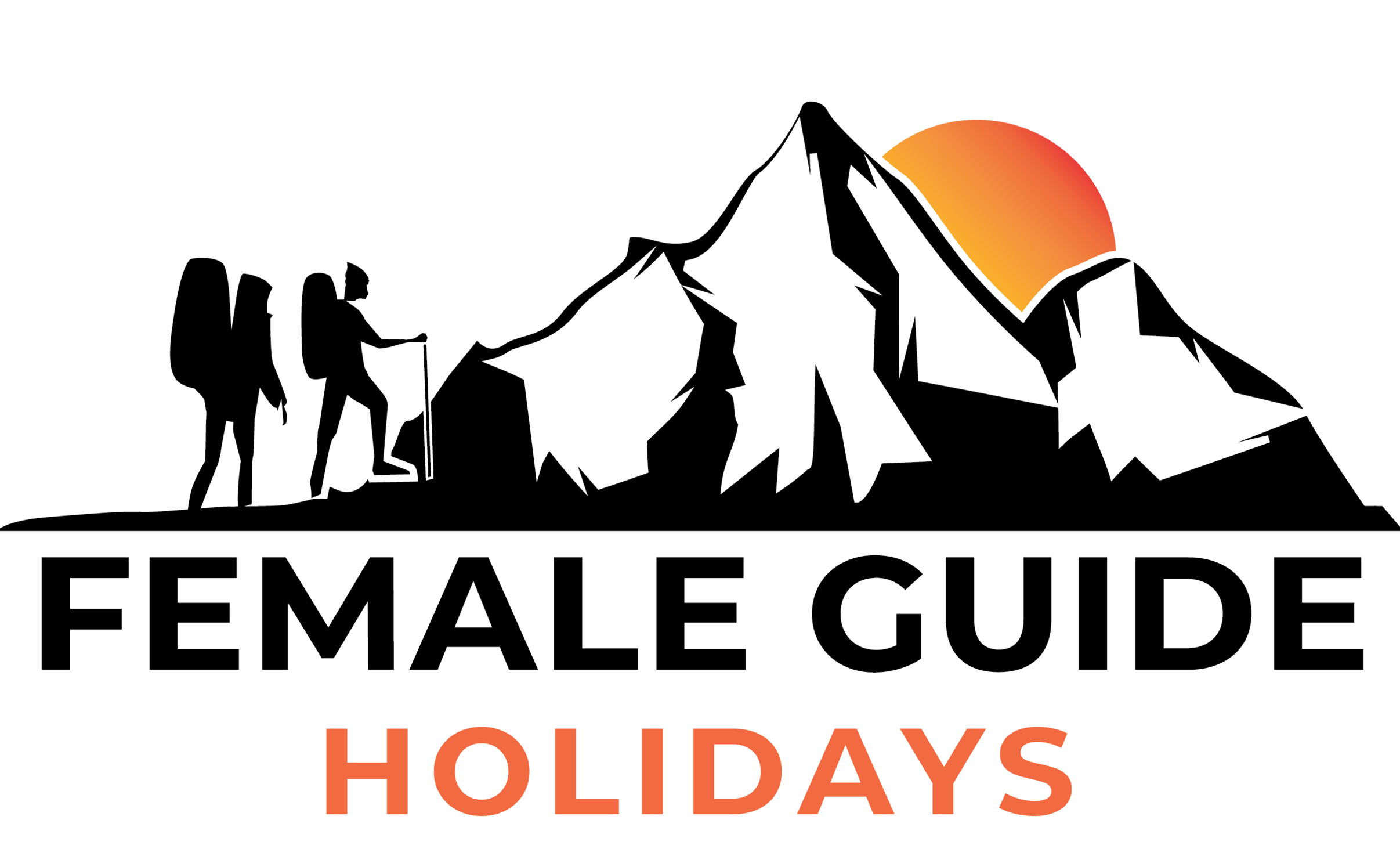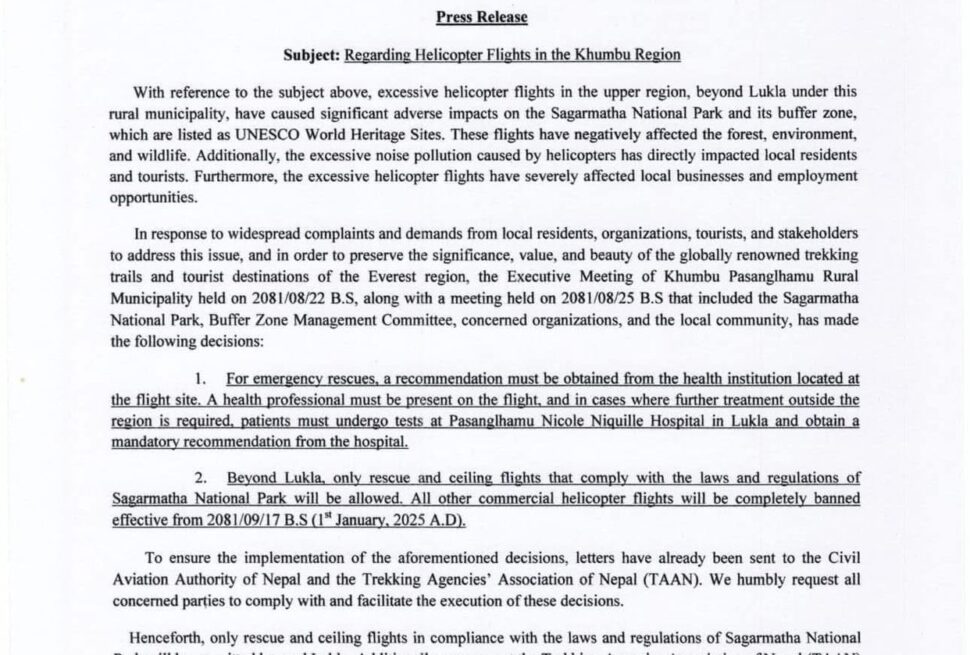Nepal Bans Solo Expeditions: In a significant move to enhance safety, the Nepal government has officially ended solo expeditions on Mount Everest and other peaks above 8,000 metres. According to revised mountaineering regulations published in the Nepal Gazette, climbers will now be required to have at least one professional mountain guide for every two climbers. This new regulation, which came into effect on February 3, 2025, aims to improve safety standards and reduce risks associated with high-altitude climbs in the Himalayas.
Why Nepal Has Banned Solo Expeditions on Everest
Nepal’s decision to ban solo expeditions on Everest and other 8,000-metre peaks follows growing concerns about climber safety in increasingly challenging mountain conditions. The new rules stipulate that every two climbers must be accompanied by at least one certified mountain guide. This change applies to Mount Everest (8,849 metres), along with other peaks above 8,000 metres, which are popular among climbers worldwide.
Arati Neupane, Director at the Department of Tourism, explained that this regulation was implemented to ensure the safety of climbers. With the harsh environment and extreme conditions on such high-altitude climbs, having experienced guides will help manage risks more effectively, ultimately protecting climbers from potential accidents.
Key Highlights of the New Regulation
Under the previous rules, a single guide could accompany a group of climbers scaling mountains above 8,000 metres. However, the new regulations now mandate that for every two climbers, one guide must be provided. This change aims to ensure that climbers have adequate support and supervision on their dangerous expeditions.
The revised regulations impact the following:
- Mandatory Guides: For every two climbers on peaks above 8,000 metres, including Mount Everest.
- Increased Safety Standards: The involvement of experienced guides will significantly reduce the risk and provide a safety net for climbers attempting to scale some of the world’s most challenging mountains.
- Impact on Group Expeditions: Climbers planning group expeditions will now need to adjust their strategies and plan their climbs with the new regulations in mind.
Fee Increases for Climbing Mount Everest
In addition to these safety regulations, the Nepal government has also announced a significant increase in the royalty fees required to climb Mount Everest. The new fees, effective from September 1, 2024, are as follows:
- Spring Season (March-May): The climbing fee has increased from USD 11,000 to USD 15,000 per person.
- Autumn Season (September-November): The fee has risen from USD 5,500 to USD 7,500.
- Winter (December-February) & Monsoon (June-August): The fee has been increased from USD 2,750 to USD 3,750.
Although the royalty hike aims to support mountaineering infrastructure and ensure better safety protocols, some stakeholders, such as Mingma G Sherpa, Managing Director of Imagine Nepal Treks, have expressed concerns that such increases could discourage climbers from coming to Nepal. Sherpa emphasized the need for affordable fees to sustain Nepal’s position as a leading destination for Everest expeditions.
How These Changes Impact Nepal’s Mountaineering Tourism
Nepal’s decision to end solo expeditions on Everest and other 8,000-metre peaks marks a new phase in mountaineering tourism. While the decision aims to increase safety, it could also drive up costs for climbers due to the added fees and the mandatory presence of guides. However, safety is the top priority for the Nepalese government, and these measures are likely to reduce the number of accidents and fatalities on these challenging climbs.
The Royalty hike and the new guide requirements are expected to bring in more revenue, which can be reinvested into the country’s mountaineering infrastructure, safety systems, and environmental preservation efforts. In the long run, these changes could improve the overall climbing experience in Nepal and help the country maintain its reputation as a top destination for mountain tourism.
What Does This Mean for Climbers?
For climbers planning to scale Mount Everest or other 8,000-metre peaks in Nepal, these changes mean that they will need to factor in additional costs for guide services and permits. Those planning to go on group expeditions must ensure they have the necessary arrangements in place for their guides.
Additionally, solo climbers will no longer be able to scale these peaks without a guide. While this may be seen as a restriction for some, it is a necessary step toward ensuring the safety and well-being of all climbers. Experienced guides can provide crucial support, guidance, and expertise, making the experience safer and more enjoyable for those attempting these extreme challenges.
Conclusion
Nepal’s updated regulations on Mount Everest and other 8,000-metre peaks reflect the country’s growing commitment to climber safety and responsible mountaineering tourism. These changes, along with the increased royalty fees, will reshape the way expeditions are organized and ensure that Nepal remains a safe, sustainable, and world-class destination for mountaineers from around the globe.
As Nepal continues to be a hotspot for mountaineering tourism, the new regulations will play a key role in improving safety standards and maintaining the country’s reputation as a leading destination for high-altitude climbing. For future climbers, this marks the beginning of a more secure and structured approach to scaling the world’s highest peaks.


